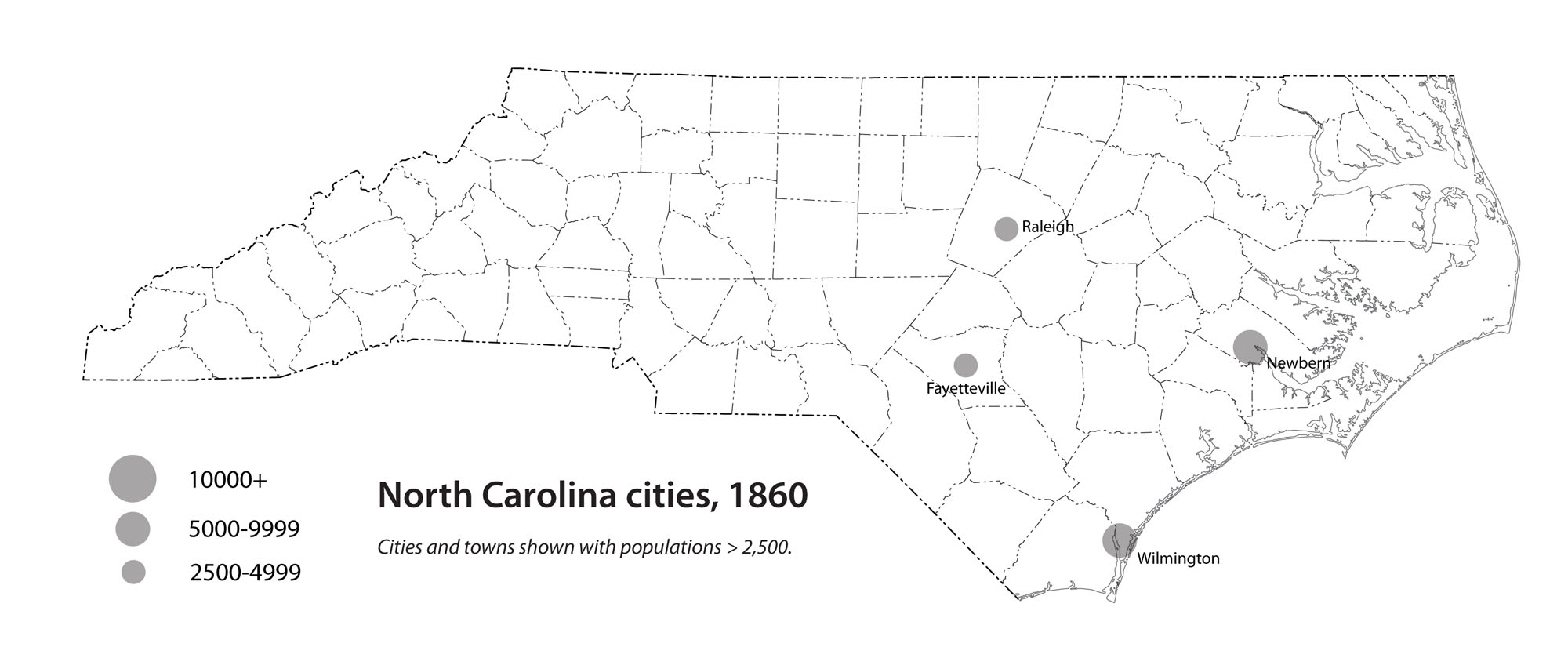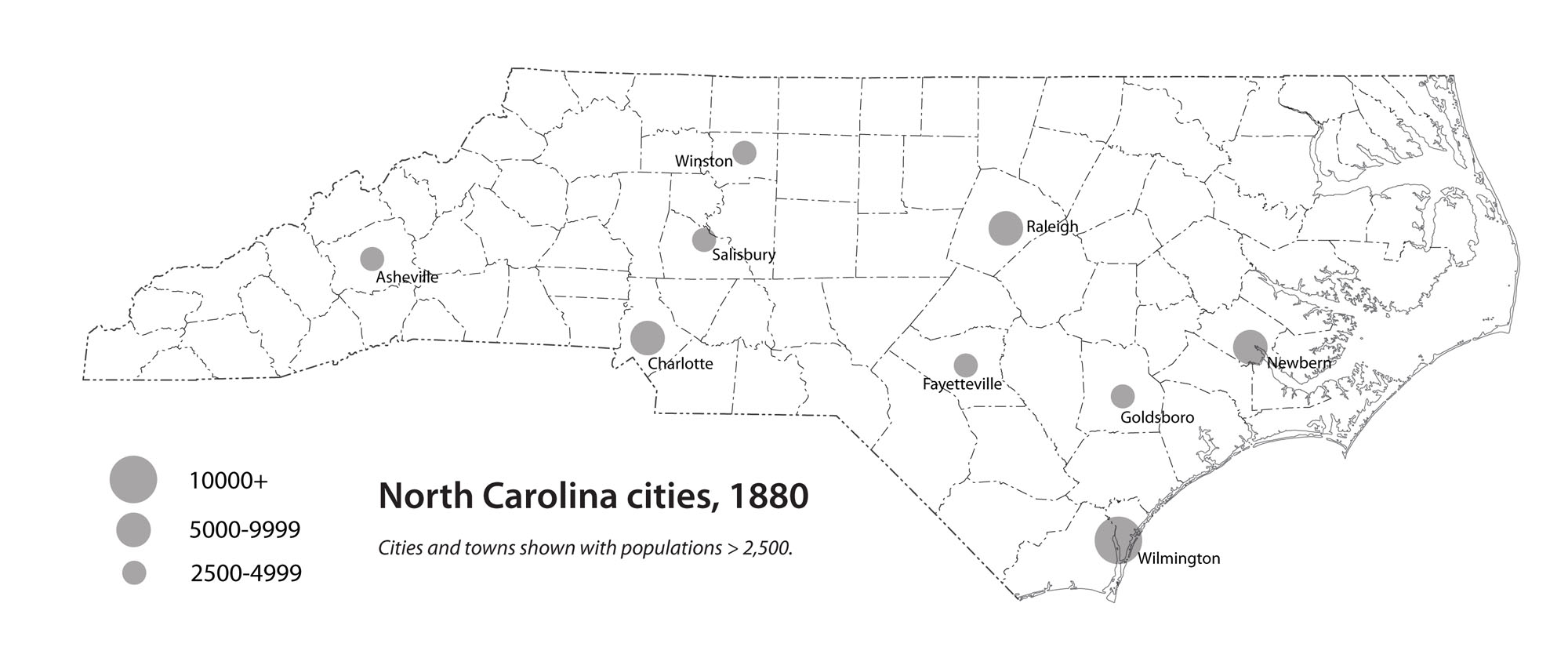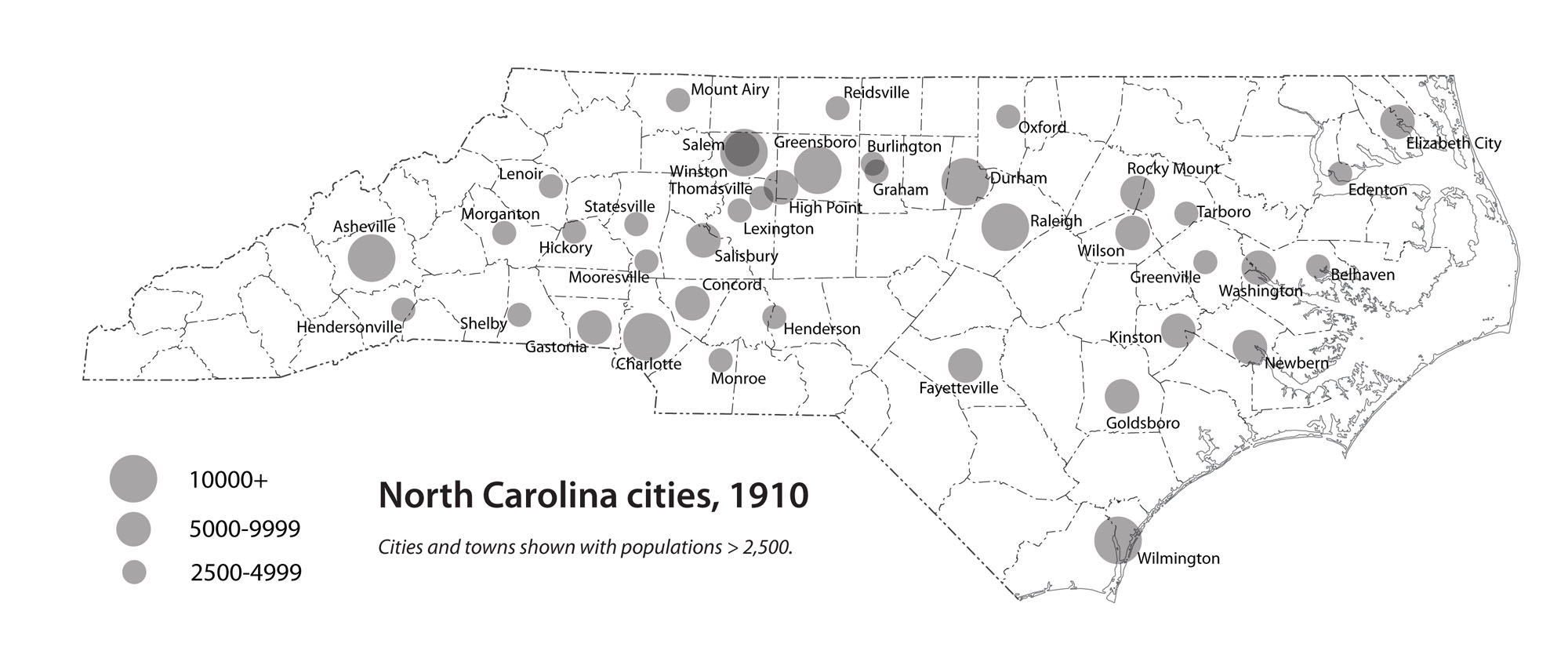After the Civil War, cities across the United States — and especially cities in the North Central states, such as Chicago — grew rapidly as factories were built and immigration increased. In North Carolina, cities grew especially quickly. Before the war, the state had only four towns with populations of at least 2,500. (Today that would be a very small town.) By 1910, there were more than forty.
The United States Census of 1890 collected detailed information about people living in cities. This table shows the number of cities with 10,000 or more inhabitants as of June 1, 1890, with the increase in totals and percentages since 1880. The excerpts here will help you put North Carolina's urban growth in regional and national context.
Cities of 10,000 inhabitants and upwards in the United States on June 1, 1890
If you compare the growth of cities in North Carolina to the growth of industry, you'll find — not surprisingly — that they went hand-in-hand. The table below lists the rural and urban population of North Carolina counties in 1900, with the percentage of each that was nonwhite. Look closely at the percentages of rural and urban population that was nonwhite. Were African Americans and American Indians more or less likely than whites to move to cities in late nineteenth-century North Carolina? Why do you suppose that was?
Rural, urban, and nonwhite population of North Carolina counties, 1900


